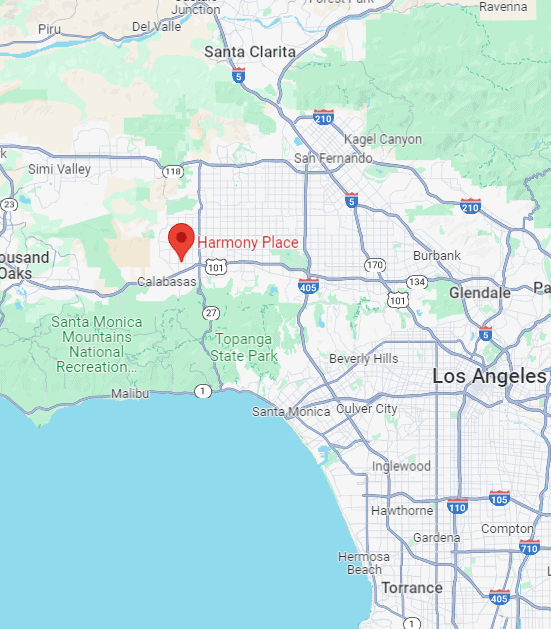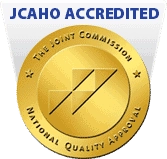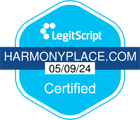Xanax Rehab in Los Angeles, CA
Looking for Xanax rehab in Los Angeles with licensed medical detox and therapy? Harmony Place is a Los Angeles Xanax rehab center providing evidence-based treatment for Xanax addiction, from medically managed detox to residential and outpatient care. If you need treatment for Xanax addiction in Los Angeles, our team is ready to help.
At our Xanax rehab center in LA, you’ll receive individualized addiction care that can include medical detox, residential treatment, PHP, IOP, and dual-diagnosis therapy. Our clinicians tailor Xanax addiction treatment in Los Angeles residents trust, combining cognitive and holistic therapies to manage withdrawal, prevent relapse, and rebuild daily routines. Call to verify insurance and start recovery.
Learning About Xanax Addiction
Learning about Xanax addiction helps you understand the severe impact it can have on both mental and physical health. Xanax addiction can develop quickly, leading to withdrawal symptoms such as anxiety, tremors, and insomnia. Recognizing Xanax addiction symptoms early is crucial for timely intervention and effective addiction treatment.
Xanax addiction rates have been increasing, mainly due to the drug’s calming effects. People often misuse it to cope with stress or anxiety, which can lead to dependency. Common Xanax addiction symptoms include mood swings, cognitive impairment, and physical dependence. If you or a loved one are experiencing these signs, a Xanax addiction intervention may be necessary. Medical detox and professional treatment are vital for managing Xanax withdrawal symptoms and overcoming addiction safely.
Is Xanax Considered a Benzodiazepine?
Yes, Xanax is a benzodiazepine commonly prescribed for anxiety and panic disorders. It works by calming the nervous system, but misuse can quickly lead to dependency and addiction. Long-term use increases the risk of addiction, requiring professional intervention for safe recovery. Treatment options are available if you struggle with Xanax abuse and dependency.
If you’re struggling with Xanax abuse, getting help is essential. Xanax addiction recovery programs, like those offered at our Harmony Place Treatment Center, can guide you through the healing process. On the West Coast, we provide specialized Xanax abuse treatment.
What Makes Xanax an Addictive Drug?
Xanax is considered an addictive drug primarily due to its potent effects on the brain’s neurotransmitters, particularly gamma-aminobutyric acid (GABA). By enhancing GABA activity, Xanax produces calming effects, leading to feelings of relaxation and euphoria. This creates a risk of dependency as you may seek to replicate these pleasurable sensations.
Over time, prolonged use can increase tolerance, prompting you to need higher doses to achieve the same effects. This cycle of dependency can result in withdrawal symptoms when the drug is not taken, reinforcing the need for continued use. Understanding the addictive nature of Xanax is crucial for recognizing the importance of seeking professional help if you are struggling with dependency.
Xanax Addiction Symptoms and Dependencies
Xanax addiction symptoms and dependencies can present in several ways, such as increased tolerance, intense cravings, and withdrawal symptoms when not taking the drug. Recognizing Xanax addict signs is essential for timely intervention, allowing you to seek help before your addiction escalates and impacts your overall health and well-being.
Common Xanax addiction symptoms may also include mood swings, cognitive impairment, and physical dependence. If you or someone you know is exhibiting these signs, exploring Xanax addiction rehabilitation options is vital. Various treatment programs, including medical detox and addiction therapy programs, are available to help you recover safely and effectively from Xanax addiction. Finding help from professionals can pave the way to a healthier, addiction-free life.
Criteria for Xanax Addiction
The criteria for Xanax addiction typically include a pattern of misuse, increased tolerance, and continued use despite negative consequences. You may also experience withdrawal symptoms when not using the drug, indicating a physical dependence that requires professional help to overcome.
If you or a loved one meets these criteria, exploring Xanax addiction rehabilitation options is crucial. In the Golden State, Harmony Place Addiction Recovery offers customized programs to manage Xanax dependency and help you regain control of your life. With comprehensive support, you can embark on recovery and a healthier future. Contact us to inquire about our Xanax rehab centers in Los Angeles.
Signs and Symptoms of Xanax Addiction
Knowing the signs and symptoms of Xanax addiction is critical for early intervention and recovery. As a prescription medication commonly used to treat anxiety and panic disorders, Xanax can lead to dependency when misused. Understanding these indicators can help you and your loved ones seek support and treatment.
Physical Symptoms of Xanax Abuse
Xanax abuse can manifest in various physical symptoms that signify increasing dependency on the medication. Understanding these physical symptoms is vital for prompt intervention and effective treatment. Common physical signs of Xanax abuse include drowsiness, dizziness, slurred speech, memory impairment, changes in appetite, insomnia, and withdrawal symptoms upon cessation.
- Drowsiness and Fatigue: One of the most noticeable effects of Xanax abuse is excessive drowsiness. You may find it challenging to stay awake during the day, leading to a persistent feeling of fatigue. This can affect daily activities and responsibilities, impacting work or school performance.
- Dizziness and Lightheadedness: Abusing Xanax can cause significant dizziness or lightheadedness, making it difficult to maintain balance. This symptom may also increase the risk of falls and accidents, especially if you engage in activities that require alertness, such as driving.
- Slurred Speech: Since Xanax is a depressant, it can lead to slurred speech and impaired coordination. You may struggle to articulate your thoughts clearly, which can be particularly alarming to friends and family members who notice changes in communication.
- Memory Impairment: Xanax abuse can result in memory problems, including short-term memory loss or difficulties recalling recent events. You may find yourself frequently forgetting conversations or misplacing items, which can contribute to frustration and anxiety.
- Changes in Appetite: Abusing Xanax may lead to significant changes in appetite, either increasing or decreasing food intake. You might experience cravings for specific foods, while others may neglect your nutrition, leading to unhealthy weight changes.
- Insomnia or Sleep Disturbances: While Xanax is often prescribed to help with sleep issues, its abuse can paradoxically lead to insomnia or disrupted sleep patterns. You may find falling or staying asleep challenging, increasing fatigue and irritability during the day.
- Physical Withdrawal Symptoms: When you stop using Xanax after prolonged abuse, you may experience withdrawal symptoms, including tremors, sweating, and increased heart rate. These physical reactions can be uncomfortable and potentially dangerous, emphasizing the importance of seeking professional help for detoxification.
Psychological Symptoms of Xanax Abuse
Xanax abuse not only leads to physical health complications but also significantly impacts an individual’s mental and emotional well-being. Understanding the psychological symptoms associated with Xanax abuse is essential for recognizing dependency and seeking appropriate treatment. Here are some common psychological symptoms of Xanax abuse:
- Increased Anxiety or Panic Attacks: While Xanax is prescribed to alleviate anxiety, misuse can paradoxically lead to heightened anxiety levels. You may experience increased feelings of panic or anxiety, especially during withdrawal periods when the medication’s effects wear off. This cycle can create a reliance on the drug to manage anxiety, perpetuating the addiction.
- Depression: Chronic abuse of Xanax can contribute to depressive symptoms, including persistent sadness, hopelessness, and lack of interest in previously enjoyed activities. You may withdraw from social interactions and feel isolated, further exacerbating your mental health struggles.
- Mood Swings: If you are abusing Xanax, you may experience significant mood swings, oscillating between periods of extreme calm and heightened irritability or aggression. These unpredictable emotional changes can strain relationships with family and friends, creating additional social stress.
- Cognitive Impairment: Xanax abuse can lead to cognitive difficulties, including trouble concentrating, indecisiveness, and a general decline in mental clarity. You may find it hard to focus on tasks, affecting your performance at work or school and hindering daily functioning.
- Paranoia or Delusions: In some cases, Xanax abuse can lead to paranoid thoughts or delusional thinking. You may become suspicious of others or develop irrational beliefs that can disrupt your perception of reality, causing distress and further isolation.
- Compulsive Behavior: If you struggle with Xanax addiction, you may engage in compulsive behaviors, such as seeking out the drug from multiple sources or lying about your usage. This behavior often stems from a desperate need to maintain access to the medication, reflecting the depth of your dependency.
- Withdrawal from Social Activities: As psychological symptoms intensify, you may withdraw from social activities and support systems. Isolating may cause a vicious cycle, as fewer social interactions make anxiety and depression more intense.
Who Can Prescribe Xanax?
Xanax can be prescribed by qualified healthcare professionals, including psychiatrists, primary care physicians, and select nurse practitioners. These providers evaluate your specific needs and decide if Xanax is suitable for treating conditions such as anxiety and panic disorders, ensuring that the medication is used safely and effectively.
Only licensed professionals must prescribe Xanax to ensure safe and responsible use. You will evaluate your medical history and monitor for potential side effects or signs of dependency. Regular follow-ups are essential to adjust the dosage or explore alternative treatments, ensuring that you receive the best care possible while minimizing risks associated with Xanax use.
Street Names for Xanax
Street names for Xanax include “bars,” “zannies,” and “blue footballs.” These slang terms are commonly used in recreational settings and can signify the misuse of Xanax. Such misuse poses serious risks to your health and safety, highlighting the importance of recognizing these terms to address potential substance abuse effectively.
Understanding these street names is crucial for recognizing potential substance abuse and intervention needs. The casual language surrounding Xanax can downplay the severe nature of addiction and dependency. If you suspect someone is using Xanax recreationally, it’s essential to seek help and explore treatment options to address the underlying issues associated with its misuse.
Where Does Los Angeles Rank in Xanax Use?
Los Angeles ranks among the highest in Xanax use in the United States, reflecting broader trends in prescription drug misuse. The city’s fast-paced lifestyle and high levels of stress contribute to the rising demand for Xanax, which is often used to manage anxiety and panic disorders.
If you or someone you know is struggling with Xanax dependency, it’s essential to seek help from specialized professionals. Numerous Xanax addiction treatment facilities are available in the area, providing tailored recovery programs. Contact us at Harmony Place Drug and Alcohol Treatment Center to inquire about our Xanax addiction rehab programs and take the first step toward healing and a healthier future.
What Are Xanax Addiction Rates in SoCal?
Between 2017 and 2019, the average prevalence of substance use disorder in California each year was 8.3%, affecting approximately 2.7 million individuals. In 2019, the rate of drug-induced deaths was highest among adults aged 36 to 64, with those aged 26 to 35 experiencing a significantly higher rate of drug-induced deaths compared to alcohol-related deaths.
In the U.S. in 2019, 16% of overdose deaths involving opioids also included benzodiazepines, with 35% of individuals using benzodiazepines for over four weeks likely to develop a dependence. Additionally, American women are 11% more likely than men to receive medication prescriptions, while men are 22.9% more likely to misuse these prescriptions. Women generally use stimulants as study aids, whereas men are more likely to use them for recreational purposes or experimentation.
What Is a Xanax Detoxification Program in Los Angeles?
A Xanax medical detoxification program in Los Angeles is a structured treatment designed to safely manage Xanax withdrawal symptoms as you discontinue the use of the drug. These programs are usually offered at specialized Xanax detox centers. Medical professionals provide 24/7 supervision and support to ensure your safety and comfort during detox.
In addition to medical supervision, these programs often include access to Xanax addiction counseling and support groups. This holistic approach helps you address the psychological aspects of addiction while providing tools for coping and recovery. By participating in a Xanax medical detoxification program, you can lay a strong foundation for your journey toward lasting sobriety and improved well-being. Contact us at Harmony Place to learn more about our Xanax addiction recovery programs.
What Is Xanax Addiction Treatment in Los Angeles?
Xanax addiction treatment in Los Angeles encompasses a range of services designed to help you overcome dependency. These programs are offered at specialized Xanax addiction rehab centers, where you receive comprehensive care tailored to your specific needs. Treatment often starts with medical detox to safely manage withdrawal symptoms. A combination of Xanax addiction therapy and support follows this.
You can benefit from Xanax addiction therapy and participation in Xanax addiction support groups. These resources provide essential emotional support and coping strategies, allowing you to address the underlying issues contributing to your addiction. By joining a structured treatment program, you can learn the needed skills for lasting recovery and a healthier lifestyle.
What Is a Residential Program for Xanax Addiction in Los Angeles?
A residential program for Xanax addiction in Los Angeles offers you 24/7 care in a structured environment, allowing you to concentrate on recovery without daily distractions. Typically starting with medical detoxification, these programs use several approaches to help you address the psychological aspects of addiction, promoting a comprehensive path to healing.
In a residential Xanax rehab setting, you participate in various therapies, which may include counseling, therapy in group settings, and holistic approaches. You foster a supportive community of peers in recovery. The structured environment promotes accountability and encourages you to develop coping strategies and life skills necessary for long-term sobriety. With access to professional support and resources, a residential program can significantly enhance the chances of successful Xanax addiction recovery.
What Medications Are Used for Xanax Addiction Treatment?
Medications used for Xanax addiction treatment in Los Angeles aim to ease withdrawal symptoms and reduce cravings. Commonly, doctors prescribe tapering doses of benzodiazepines to help you gradually reduce your Xanax use safely. This process minimizes the risk of severe withdrawal effects like seizures or intense anxiety. In some cases, medications like anticonvulsants or antidepressants are used to manage symptoms during detox.
In addition to managing withdrawal, medications like naltrexone or disulfiram may be prescribed to prevent relapse. These medications work by blocking the effects of drugs or causing adverse reactions when substances are used, helping you maintain sobriety. Combined with therapy and counseling, these medications support a comprehensive approach to Xanax addiction recovery.

Xanax Rehab Centers for Addiction Recovery in Los Angeles, CA
Xanax addiction treatment programs in LA and The Valley provide comprehensive care for you as you seek recovery from dependency. Many of these facilities accept insurance, ensuring that accessing the support you need is more manageable. You can find the help necessary for lasting recovery with various treatment options.
You can find residential treatment options at Harmony Place, located at 23041 Hatteras St, Woodland Hills, CA 91367, and Harmony Place East at 22913 Burbank Blvd, Woodland Hills, CA 91367. The Valley Restoration Center is available for outpatient services at 22900 Ventura Blvd, Ste 314, Woodland Hills, CA 91364. For more information and to verify insurance coverage, call our team at (855) 652-9048.
How to Find a Xanax Addiction Treatment Program in SoCal
Finding a Xanax addiction treatment program in Southern California can be a crucial step toward recovery. Here’s a step-by-step guide to help you navigate this process effectively:
- Research Facilities: Begin your search by looking for Xanax addiction rehab centers in the Greater Los Angeles area. Utilize online search engines, directories, and resources from healthcare organizations to compile a list of potential facilities. This will give you a starting point to explore various options.
- Check Accreditation and Licensing: Ensure that each rehab center on your list is accredited and licensed to provide addiction treatment services. Look for accreditation from reputable organizations like the Commission on Accreditation of Rehabilitation Facilities (CARF) or the Joint Commission. This is a sign of quality standards and best practices in addiction treatment.
- Evaluate Treatment Approaches: Investigate the treatment methodologies offered by each center. It’s important to find facilities that provide evidence-based therapies for Xanax addiction, such as Medication-Assisted Treatment (MAT), Cognitive-Behavioral Therapy (CBT), individual counseling, and group therapy. Consider centers incorporating holistic therapies to enhance the overall recovery experience.
- Assess Facilities and Amenities: While not the most critical factor, the environment of a rehab center can impact your treatment experience. Consider the facilities and amenities available, such as accommodations, recreational activities, and support services, to ensure a comfortable and supportive atmosphere.
- Review Staff Qualifications: Research the qualifications and experience of the staff at each rehab center. Ensure that they are licensed healthcare professionals with expertise in addiction treatment, including physicians, therapists, counselors, and nurses. A qualified and compassionate team can significantly impact your recovery journey.
- Check Insurance Coverage: Confirm that your insurance covers the rehab centers you’re considering. Understanding your coverage can help you gauge the affordability of different treatment options and alleviate financial concerns.
- Read Reviews and Testimonials: Read reviews written by previous patients to learn more about the quality of care each center provides. Pay attention to both positive and negative feedback to make an informed decision about where to seek treatment.
- Contact Rehab Centers: Contact the rehab centers on your list to gather additional information. Inquire about their treatment programs, admission process, duration of treatment, costs, and any specific concerns you may have. Speaking directly with staff can help clarify doubts and give you a sense of the facility’s environment.
- Explore Xanax Addiction Recovery Resources: Consider leveraging Xanax addiction recovery resources available in your area. You may find non-profit groups in the community who can give you advice and a sense of community during your recovery process.
- Look for Success Stories: Lastly, read Xanax addiction recovery success stories. These narratives can inspire hope and provide insight into the effectiveness of different treatment approaches, helping you feel more confident in your choice.
Does Health Insurance Cover Xanax Rehab in Los Angeles, CA?
Yes, many commercial health insurance plans cover Xanax rehab in Los Angeles, CA. Coverage typically includes detoxification, inpatient treatment, outpatient programs, and therapy. However, the extent of coverage can vary depending on your specific plan. Understanding your benefits is essential to ensure that the necessary treatments are covered.
To verify your insurance coverage for Xanax addiction treatment, contact us at Harmony Place Rehab Center. We can help you navigate your insurance plan, clarify what services are covered, and assist you in understanding your financial options. Contact our team to ensure you receive the support needed for a successful recovery.
How Much Does Xanax Rehab Cost Without Health Insurance Coverage in Los Angeles?
The cost of Xanax rehab without private health insurance coverage in Los Angeles can vary widely, depending on the type of program. Inpatient rehab can range from $5,000 to $30,000 for a 30-day program, while outpatient treatment may cost between $1,000 and $10,000, depending on the intensity and duration of care.
Additional addiction treatment costs may include medical detox, which can range from $1,000 to $3,000, and therapy sessions, which typically cost $100 to $200 per session. Many treatment centers offer payment plans or sliding-scale fees to help make treatment more affordable for people without insurance.
How Much Does Xanax Addiction Treatment Cost With Health Insurance Support?
The cost of Xanax addiction treatment with health insurance support can significantly reduce the drug rehab cost. Many insurance plans cover services like detox, inpatient rehab, and outpatient programs, but the amount of coverage varies based on your policy. Depending on your specific plan, co-pays, deductibles, and co-insurance fees may still apply.
To verify your insurance coverage and understand your financial responsibilities, contact us at Harmony Place. We can help you determine what treatments are covered under your plan and guide you through the process to ensure you receive the necessary care for Xanax addiction recovery.
Available Rehab for Xanax Addiction in Los Angeles, California
Xanax addiction treatment rehabs in Los Angeles, California, offer specialized programs to help you overcome dependency on this powerful medication. These facilities provide comprehensive care, including detox, therapy, and support groups, to guide you through recovery. Below are critical components of Xanax addiction treatment available in LA.
Xanax Addiction IOPs
Xanax addiction intensive outpatient programs (IOPs) provide flexible treatment options if you need structured care while maintaining your daily responsibilities. These programs include therapy sessions, counseling, and support groups, all aimed at helping you manage your addiction and develop coping strategies. IOPs are ideal if you do not require 24/7 supervision but still need intensive treatment.
If you are in Xanax addiction IOPs, you often attend sessions several times a week, allowing you to receive comprehensive care while balancing work, school, or family obligations. These programs focus on addressing the psychological aspects of addiction, promoting long-term recovery, and preventing relapse.
Xanax Addiction Evening Treatment (Outpatient Program)
Xanax addiction evening treatment programs offer you the flexibility to receive care during the evening hours, making it easier to maintain work or family responsibilities during the day. These outpatient programs typically include therapy, counseling, and support groups, helping you address your addiction in a structured, supportive setting.
Evening treatment allows you to receive the needed help without disrupting your daily routines. With a focus on coping strategies, relapse prevention, and managing withdrawal symptoms, evening outpatient programs are a practical option if you are seeking Xanax addiction recovery while balancing other commitments.

Xanax Addiction Inpatient Residential Treatment
Xanax addiction inpatient residential treatment provides you with 24/7 care in a structured and supportive environment. In these programs, you live at the facility for an extended period, allowing you to focus on your recovery without outside distractions. The treatment includes medical detox, individual and group therapy, and holistic care to treat the physical and psychological elements of addiction.
You receive continuous support from experienced healthcare professionals by staying in a residential facility. This immersive approach helps manage withdrawal symptoms, reduce cravings, and build coping strategies, significantly improving the chances of long-term recovery from Xanax addiction.
Xanax Addiction Detoxification Program
A Xanax addiction detoxification program is the first critical step in helping you safely manage withdrawal symptoms. In a controlled medical environment, you gradually taper off Xanax under the supervision of healthcare professionals, minimizing the risks of severe withdrawal effects. This process ensures your safety while preparing you for further addiction treatment.
Detox programs provide 24/7 medical monitoring and may include medications to ease discomfort during withdrawal. Once detox is complete, you can transition into comprehensive treatment plans that address the psychological aspects of addiction through therapy and counseling. Detox is essential for laying the foundation for long-term recovery from Xanax dependency.
Xanax Addiction PHPs / Day Treatment
Xanax addiction partial hospitalization programs (PHPs), or day treatment, offer intensive care for those who need structured support while returning home in the evenings. These programs provide a high level of treatment, including therapy, counseling, and medical monitoring, without requiring overnight stays. PHPs are ideal for transitioning from inpatient care or needing significant daily support.
In a Xanax addiction PHP, you receive comprehensive care during the day, allowing you to address your addiction while maintaining some independence. The focus is on managing withdrawal symptoms, developing coping mechanisms, and preventing relapse, all in a supportive environment that encourages long-term recovery.
Health Insurance Plans in California That Cover Rehab for Xanax Addiction Near Los Angeles
Several private health insurance plans in California offer coverage for treatment facilities specializing in Xanax addiction near Los Angeles. Significant providers, including Anthem Blue Cross, Blue Shield of California, and Cigna, often include substance use disorder treatment in their policies. However, coverage specifics can vary, so reviewing your plan’s benefits is essential to understand what services are included.
To verify your insurance coverage for Xanax addiction treatment, contact us at Harmony Place. Our team is here to help you navigate your insurance options and determine the level of coverage available to you. You can contact our team for more information on how to start your recovery journey.
How to Get Admitted to a Xanax Addiction Treatment at Harmony Place
Getting admitted to a Xanax addiction treatment program at Harmony Place involves a straightforward process designed to prioritize your needs and comfort. First, you will have an initial rehab assessment, where our team will evaluate your situation, understand your specific challenges, and determine the most suitable treatment options. This assessment is crucial for tailoring a program that meets your unique requirements.
Once your treatment plan is established, we will guide you through the admissions process, including verifying your insurance coverage if applicable. Our dedicated team is here to support you every step of the way. If you’re ready to take the first step toward recovery, we encourage you to call us at (855) 652-9048. Your journey to healing starts here.
Start Xanax Rehab in Los Angeles Today
Whether you’re seeking rehab for Xanax addiction or comparing Los Angeles Xanax rehab centers, Harmony Place makes the process clear and compassionate. Speak with our admissions team for an insurance check and same-day guidance. If you need treatment for Xanax addiction in Los Angeles, we’ll outline detox, residential, PHP, and IOP options that fit your goals.
Call us today or send a message to begin your confidential assessment. Our Los Angeles Xanax rehab pairs evidence-based care with real-world support, so you progress safely from detox to ongoing therapy. Choose a trusted Xanax rehab center in LA—Harmony Place—and take the first step toward lasting recovery for yourself or a loved one.
Xanax Addiction Treatment in Los Angeles
Harmony Place offers compassionate, evidence-based programs for Xanax addiction recovery in Los Angeles, California. Our treatment options include medical detox, withdrawal management, residential care, and outpatient services to support long-term recovery. Explore the links below to learn more about our Xanax rehab programs and addiction services.
- Alcohol Addiction Rehab
- Drug Addiction Rehab
- Cocaine Addiction Rehab
- Fentanyl Addiction Rehab
- Heroin Addiction Rehab
- Ketamine Addiction Rehab
- Lunesta Addiction Rehab
- Marijuana Addiction Rehab
- Meth Addiction Rehab
- Opiate Addiction Rehab
- Opioid Addiction Rehab
- Painkiller Addiction Rehab
- Sedative Addiction Rehab
- Adderall Addiction Rehab
- Ambien Addiction Rehab
- Benzo Addiction Rehab
- Halcion Addiction Rehab
- Restoril Addiction Rehab
- Codeine Addiction Rehab
- Demerol Addiction Rehab
- Hydrocodone Addiction Rehab
- Librium Addiction Rehab
- Morphine Addiction Rehab
- Mysoline Addiction Rehab
- Oxycodone Addiction Rehab
- Ritalin Addiction Rehab
- Sonata Addiction Rehab
- Suboxone Addiction Rehab
- Valium Addiction Rehab
- Vicodin Addiction Rehab
- Xanax Addiction Rehab
- Zimovane Addiction Rehab
Statistics on Xanax Addiction Rates in Southern California
- Between 2017 and 2019, the annual average prevalence of substance use disorder in California was 8.3%, equating to around 2.7 million individuals, according to the California Behavioral Health Barometer.
- In the US in 2019, 16% of overdose deaths related to opioids also included benzodiazepines. Additionally, 35% of individuals who use benzodiazepines for more than four weeks are likely to develop a dependence on them, according to Addiction Help.
- In California, 9% of the population met the criteria for a Substance Use Disorder (SUD) in the last year, according to the California Health Care Foundation (CHCF). The use of Xanax falls under the category of depressant abuse, which includes drugs prescribed for anxiety and sleep disorders. This reflects a broader trend in substance use disorders across the state.
- In 2018, about 0.4% of people in the U.S. reported misuse of prescription sedatives, which includes drugs like Xanax, according to the National Center for Drug Abuse Statistics.
- About 7.5% of primary care patients filled a prescription for benzodiazepines within the last 12 months, according to a study by UC San Francisco and Kaiser Permanente Northern California. This study also found that individuals with “unhealthy alcohol use” were 15% more likely to be prescribed benzodiazepines than moderate drinkers and non-drinkers.
Visiting Greater Los Angeles, Places to See
When visiting Greater Los Angeles, there are numerous sites to explore, all offering a unique experience. Start your journey in Palm Springs and Palm Desert, known for their stunning desert landscapes and luxury resorts. Don’t miss the chance to spot celebrities at nearby surfing beaches, where the sun and surf create a perfect getaway.
Yosemite National Park is a must-visit if you are seeking adventure. It boasts breathtaking views and hiking opportunities. Families will love Disneyland, where magic comes to life through beloved characters and thrilling rides. With so much to see and do, Greater Los Angeles offers an unforgettable experience for every type of traveler.






